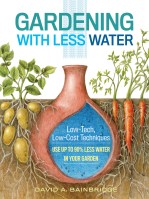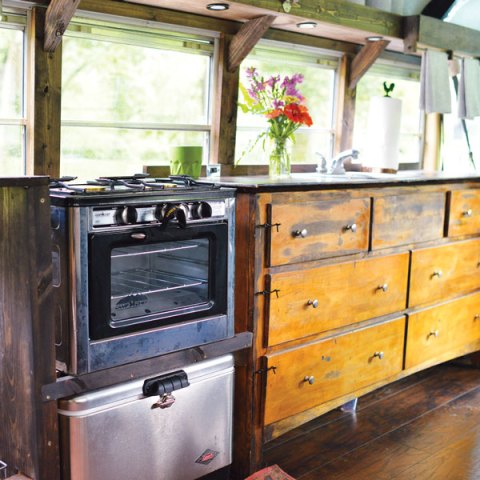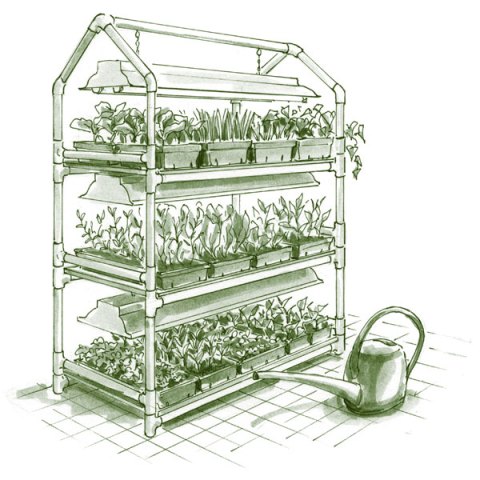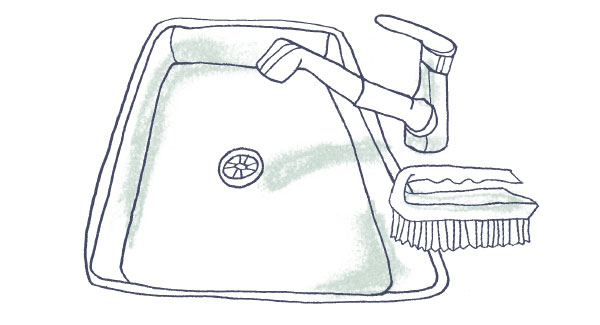Kitchen Greywater: Water Conservation Straight from the Sink
Reusing water that we already have is a simple and common sense idea, and greywater systems do just that. If regulations in your state allow it, recycling water from the kitchen sink for irrigation can cut down on water waste and save your landscape in times of drought.
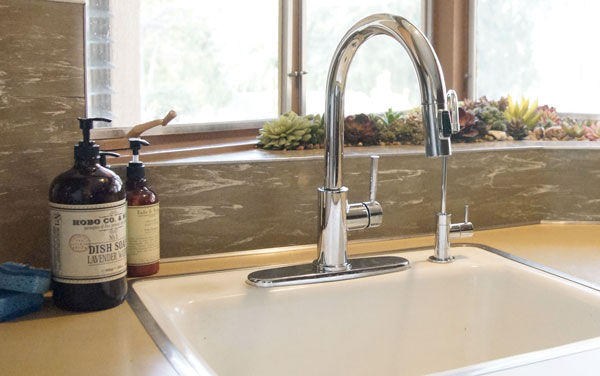
WHAT IS GREYWATER?
Greywater is gently used water from sinks, showers, baths, and washing machines; it is not wastewater from toilets or laundry loads containing poopy diapers. Plants don’t need clean drinking water like we do! Using greywater for irrigation conserves water and reduces the energy, chemicals, and costs involved in treating water to potable quality. Just use “plant friendly” soaps (those low in salts, and free of boron and bleach), and you have a good source of irrigation water that’s already paid for. Greywater systems save water and more. They can extend the life of a septic system, save time spent on watering, act as “drought insurance” (a source of irrigation during times of extreme water scarcity), and encourage the use of more environmentally friendly products. They also use less energy and fewer chemicals than other forms of wastewater treatment.
SOURCE SPOTLIGHT: THE KITCHEN SINK
Kitchen sinks usually produce a plentiful supply of water that can be diverted from the sink drain inside the house. Kitchen greywater tends to contain food scraps and grease, so it takes more effort to maintain the system than with those for other greywater sources.
Some states consider kitchen water “greywater,” while others consider it “blackwater,” like what comes out of the toilets. If your state doesn’t call kitchen water “grey,” a legal installation will be more challenging. With determination and an open-minded building department, it’s possible to get an experimental permit or use the “alternative materials and methods” section of your state’s code.
Divert kitchen water directly below the sink for easy access to the pipes and diverter valve. The greywater pipe needs a route to the landscape, and you can send it below the floor or directly out of the house, depending on your situation and climate. Local code may require the diverter valve be located downstream of the vent connection.
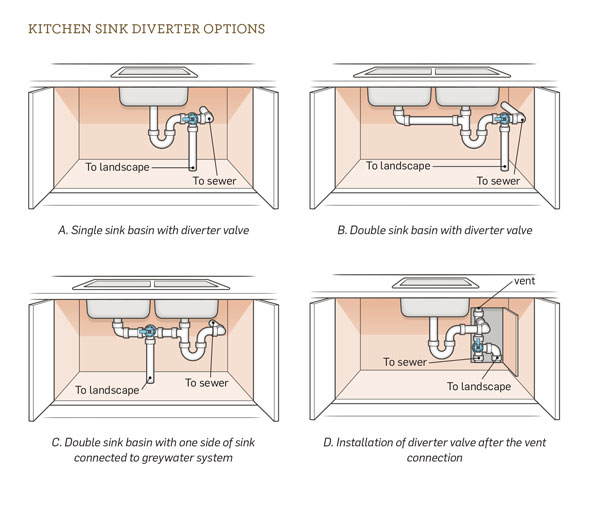
FILTERING KITCHEN GREYWATER WITH MULCH BASINS
The challenge with a kitchen sink greywater system is the gunk. First, make sure you have a fine screen in the sink to catch food BEFORE it goes down the drain. If you have a double sink, consider plumbing just one side to the greywater system and using the other side for the dirtiest, greasiest dishes. Next, think about where the food particles that make it past your screen will end up. Should you have a pre-filter before the irrigation system to catch them? A wood-chip biofilter? Screen? Worm bin? Beware. Any filter will quickly clog, causing a backup or overflow of greywater, plus more maintenance to clean it.
Kitchen greywater creates a unique type of gunk that is merciless on filters. For years I pre-filtered the kitchen water as part of my greywater system. For years I cleaned out disgusting filters: screens, sand, wood-chip filters, wetlands filters. The last straw was the day I came home from a particularly long day at work to see my wood-chip bio-filter had clogged (again) and kitchen sink water was pouring out the top of the filter and running down the side of my house.
Then I found a simple solution: mulch basins. These basins are depressions in the soil, filled with wood chips that catch organic matter and infiltrate greywater into the soil. Instead of sending all the water to one basin, divide up the flow to multiple basins. This branched drain system requires less frequent maintenance since each basin receives only a portion of the total flow. Organic matter in the greywater decomposes in the basins and is eaten by earthworms.
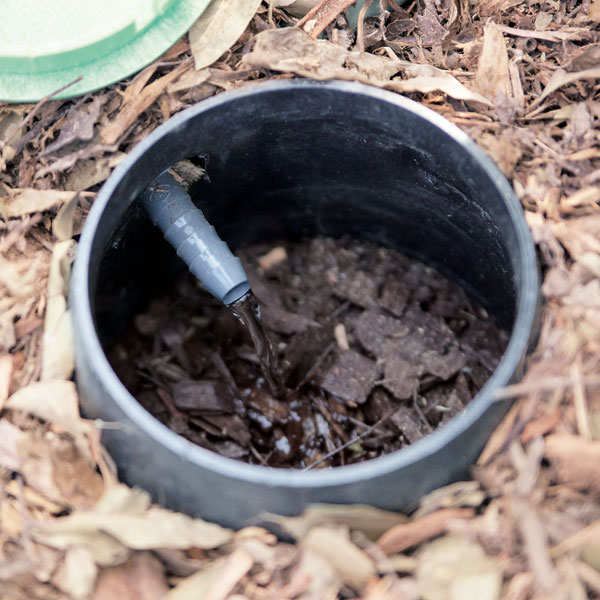
The first time I dug under my kitchen sink greywater outlets, I was amazed to see the soil beneath the mulch swarming with earthworms. In the past, I’d seen only failed experiments in which the kitchen water flowed directly through a worm bin before the irrigation system. It’s hard to keep worms happy when they’re doused with water on a daily basis; they leave or die. In the mulch basin system, worms can come and go as they please, eating organic debris from the greywater. Eventually the wood chips will clog and decompose, slowing the infiltration. Maintenance is easy: grab a shovel, dig out the decomposed material, and replace with fresh wood chips.
Other people have had success sending unfiltered kitchen water to large, underground “infiltration galleys.” Using a manufactured grease-trap (or grease interceptor) can also prevent grease from entering the system. Mulch basin filtering kitchen sink water. Note that a lid (not shown) covers the outlet.
PLANT-FRIENDLY SOAPS
Greywater can either benefit or harm plants, depending on what soaps and detergents you use. Its quality as an irrigation source is directly connected to what you put down the drain. Luckily, it’s easy to choose soaps and other products that are plant-friendly, avoiding the following ingredients:
SALT AND SODIUM COMPOUNDS. Salts can build up in the soil and inhibit plants’ ability to take up nutrients and water. Minimize and avoid salts.
BORON. This plant microtoxin is damaging even in small amounts. Do not use any products that contain boron, including the laundry additive borax. Because it is nontoxic to people, boron is found in many ecological products.
CHLORINE BLEACH. Bleaches containing chlorine kill microorganisms, including beneficial soil microbes. Hydrogen peroxide bleach can be used instead, or you can turn off your greywater system when using bleach.
ALKALINE COMPOUNDS (OPTIONAL). Some products raise the level of pH, making the water more basic (or alkaline). This isn’t a problem for most plants, although some types (such as blueberries and azaleas) prefer acidic conditions, and basic water may not suit them. In general, liquid soaps do not increase the pH of the water, whereas bar soaps do. Cleaning products can also be extremely basic (alkaline). If you are using greywater from a source where only liquid, pH-neutral products are used, greywater can irrigate any plants, including acid-loving varieties. Refer to garden books, extension offices, or local nurseries to determine whether your plants are acid-loving.



